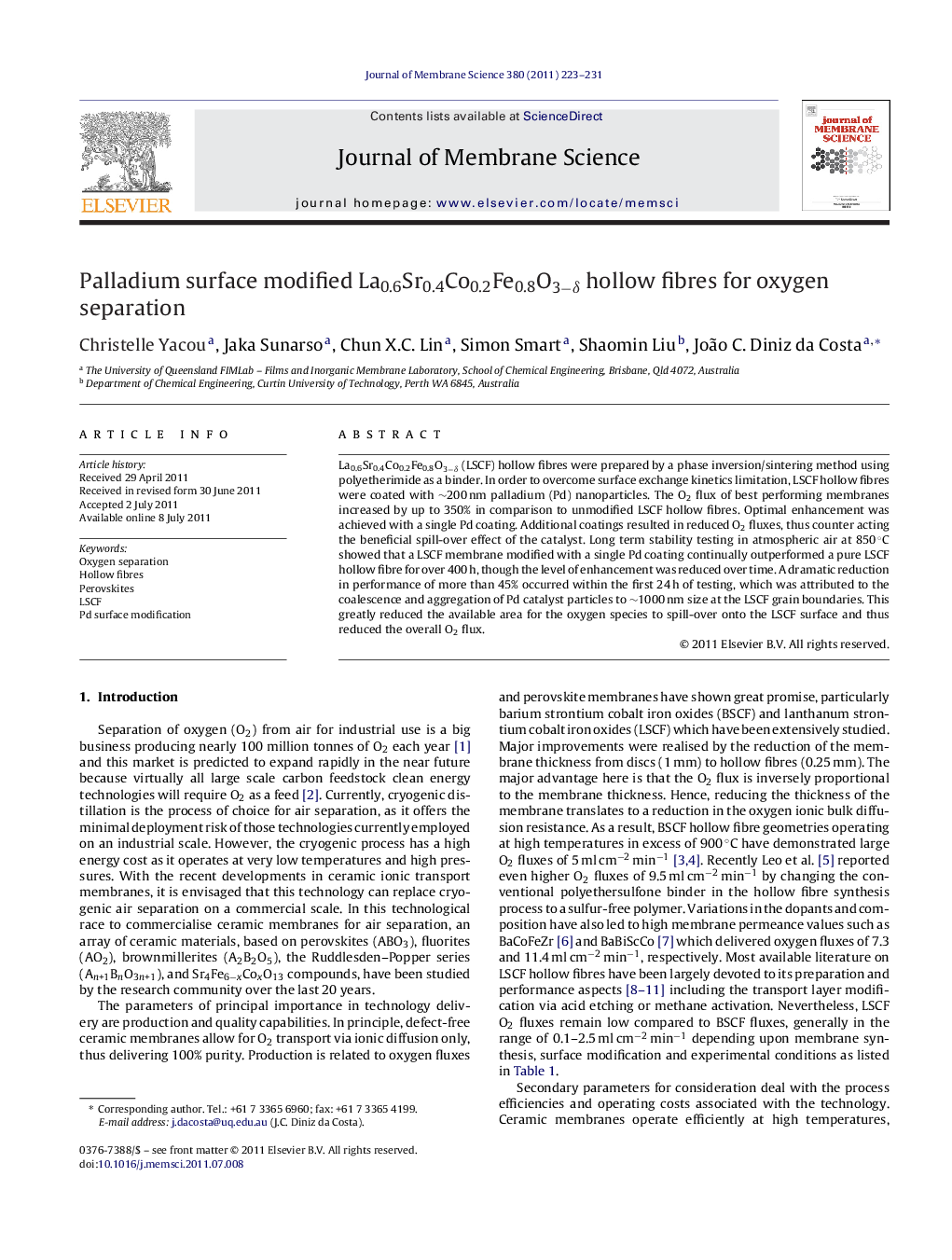| Article ID | Journal | Published Year | Pages | File Type |
|---|---|---|---|---|
| 635239 | Journal of Membrane Science | 2011 | 9 Pages |
La0.6Sr0.4Co0.2Fe0.8O3−δ (LSCF) hollow fibres were prepared by a phase inversion/sintering method using polyetherimide as a binder. In order to overcome surface exchange kinetics limitation, LSCF hollow fibres were coated with ∼200 nm palladium (Pd) nanoparticles. The O2 flux of best performing membranes increased by up to 350% in comparison to unmodified LSCF hollow fibres. Optimal enhancement was achieved with a single Pd coating. Additional coatings resulted in reduced O2 fluxes, thus counter acting the beneficial spill-over effect of the catalyst. Long term stability testing in atmospheric air at 850 °C showed that a LSCF membrane modified with a single Pd coating continually outperformed a pure LSCF hollow fibre for over 400 h, though the level of enhancement was reduced over time. A dramatic reduction in performance of more than 45% occurred within the first 24 h of testing, which was attributed to the coalescence and aggregation of Pd catalyst particles to ∼1000 nm size at the LSCF grain boundaries. This greatly reduced the available area for the oxygen species to spill-over onto the LSCF surface and thus reduced the overall O2 flux.
► La0.6Sr0.4Co0.2Fe0.8O3−δ (LSCF) hollow fibres were coated with palladium (Pd) nanoparticles. ► The O2 flux of best performing membranes increased by up to 350% in comparison to unmodified LSCF hollow fibres. ► Optimal performance was achieved with a single Pd coating. ► LSCF Pd outperformed a pure LSCF hollow fibre for over 400 h testing, though O2 fluxes reduced over time. ► Pd particles aggregated at the LSCF grain boundaries within the first 24 h of testing, reducing O2 fluxes by > 45%.
